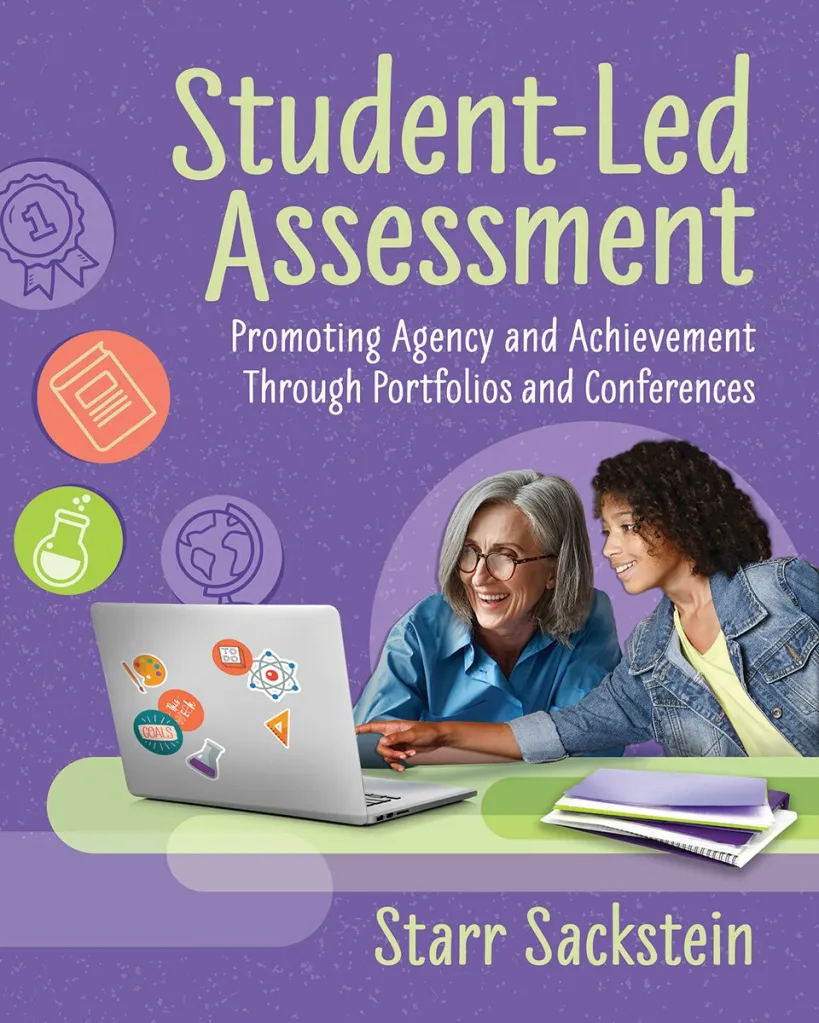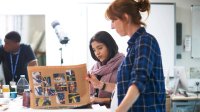Using Portfolios to Assess Student Learning
Allowing students to select the work that they feel is most representative of their learning is a powerful way to evaluate student knowledge.
Your content has been saved!
Go to My Saved Content.How should a teacher, school, or system determine the purpose of a portfolio? It depends on what they are using them for. It is essential to know your community so you can select the type of portfolio that will serve it best. You will also need to review state requirements and how best to fulfill them, especially if the portfolio is going to take the place of something more traditional. Consider the following questions:
• What are you hoping to achieve with this portfolio?
• What skills and content do you want students to demonstrate?
• Will the portfolio be assessed? If so, how?
• What criteria will show successful completion?
• What does exemplary work look like?
• What kind of variety will be acceptable?
• In what format should portfolios be submitted?
• Where will the portfolio be housed, and will it be digital or hard copy?
• Who will have access to the portfolio once it is created?
• How much autonomy does any individual teacher or student have when creating a portfolio?
• What kinds of buckets will students have to show learning? (Buckets are the overarching competencies in which multiple subject areas can fit.)
• What standards will be demonstrated through the portfolio? Will students need to present evidence of learning or just reflect on individual selections?
• What process will you use to teach students to “collect, select, reflect, connect”?
After asking these questions, it is crucial to backward-plan from what the successful candidate will contribute. What kinds of artifacts will show the success criteria as planned? How many different opportunities will they have to show that skill or knowledge in class? Once we know what we want our outcomes to be, it is easier to ensure that we are teaching for success. Teachers should ask, “What do kids know and what knowledge are they missing, and how will I fill the gaps?” Leaders should ask, “What do teachers know, and how much professional learning do we need to provide to ensure consistency if we are implementing portfolios together as a school or system?”

Co-Constructing Selection Criteria
Once you’ve identified a portfolio type and determined a purpose, you can start getting more granular. How do individual class objectives meet the needs of generic determined buckets, and how can you ensure students co-construct the portfolio selection criteria? (Remember, generic buckets are the larger competencies that all classes and content areas will fit in. They are “generic” because they don’t get into specific standards.) Students will need to express the end goal of their portfolio first and then come up with a specific checklist to follow while deciding what to include.
Creating a Professional Portfolio as a Model
It is always helpful to complete an assessment you are asking students to do and identify any stumbling blocks they may encounter as well as making sure every step of the assignment is taught in advance. One way to ensure this is to create a professional portfolio that mirrors the kind of portfolio students are asked to create.
Portfolio Assessment Versus Traditional Testing
Standardized testing seeks to level the playing field for all students. Of course, most educators understand that such tests do nothing of the sort.
Standardized tests privilege the few who may be good at test taking or have the opportunity to work with tutors. Worse, they are often misleading and biased in favor of certain social and cultural experiences. (For example, when I took the New York State English Regents exam, one of the questions had to do with vaudeville, a long-outdated form of theatrical entertainment that students from other cultures might never even have heard of.) Other forms of testing would better illustrate the depth and understanding of student learning while also giving students more agency and decreasing their anxiety.
If educators genuinely want to know what students know and can do, they should have a universal portfolio system in place that allows students to gather evidence of learning over time. This can be implemented at the national or state level. Educators at every level should be included in the development process to devise the success criteria and the skill sets to be demonstrated over time. If we gather the right stakeholders to make sound decisions, all students will benefit.
Once criteria have been determined, students can start collecting learning from their earliest educational experiences. They can be issued an online account where work can be scanned and collected each year. This information can be shared with parents, students, and future teachers to help inform instruction. Rather than produce test scores that often don’t highlight the depth of student learning, these online portfolios provide a more accurate picture of how students are doing.
Students can be taught to select work they are proud of for their portfolios and to express why they have selected it. Schools and/or states can determine how many pieces should be selected each year, and students can have ownership over what they believe best displays their learning. Obviously, teachers will be supporting students throughout this process.
After students make their selections, they should write standards-based reflections about what the pieces demonstrate and what they learned throughout the process. Because younger students won’t necessarily understand how to do this right away, teachers should scaffold the process a little longer and adjust the language of the standards to be more kid-friendly. Then the feedback they provide on students’ selections will be in a language the students understand, ensuring they’ll be able to progressively do more on their own as the year goes on.
At the end of each school year, students should discuss the goals they’ve set and met as well as new goals to be worked on in the following year. Students can learn the language to use for these discussions at a young age. In the goals, students should talk about the areas where they see progress and then decide what they want to work on moving forward.
Each content area should have a subfolder in the portfolio. In addition to content-specific goals and learning related to academics, students should also be able to demonstrate interpersonal skills like communication, collaboration, and self- regulation. Rubrics can be developed to help students assess their learning levels. Graduation criteria, as well as college- and career-readiness criteria, should also be included.
One high school I taught at used to have exit presentations where students had to defend their learning and express why they felt they were ready for their next learning journey. Instead of testing, consider implementing these presentations at the end of each school year. Students will get comfortable sharing what they have learned and asking questions to help clarify that learning. Students, teachers, and leaders can sit on the panels during these presentations. Throughout the school year, students can be taught to lead their conferences, and their parents can sit with them to review the portfolio work. Advisory teachers should be there to provide support, too. In the younger grades, where there is only one teacher, students should be included in the conferences and not left at home. It is important that conversations about learning be conducted with the learner present.
Learning is nuanced, and assessment should be, too. Be sure to offer students the opportunity to be seen as whole people who can demonstrate different skills and knowledge in many ways over time.
Source: Student-Led Assessment: Promoting Agency and Achievement Through Portfolios and Conferences (pp. 49–52), by S. Sackstein, Arlington, VA: ASCD. © 2024 by ASCD. Reprinted with permission. All rights reserved.
